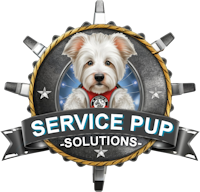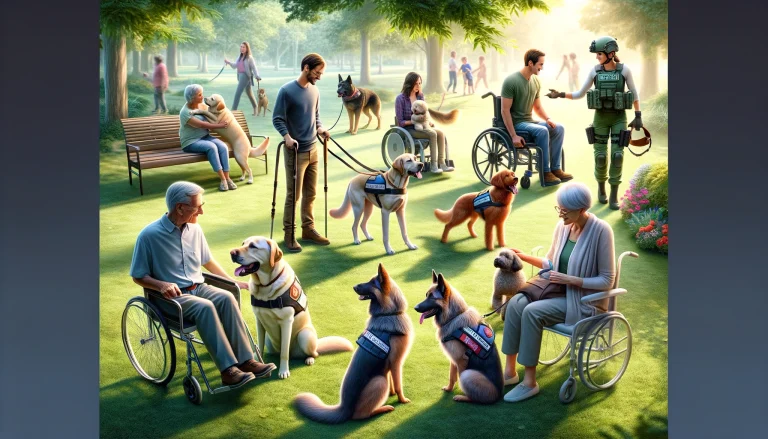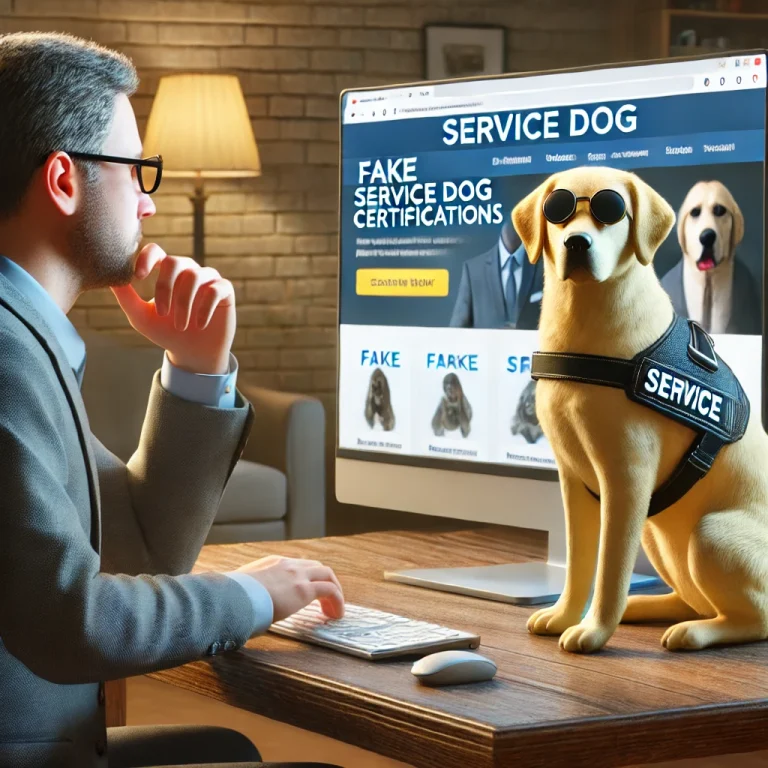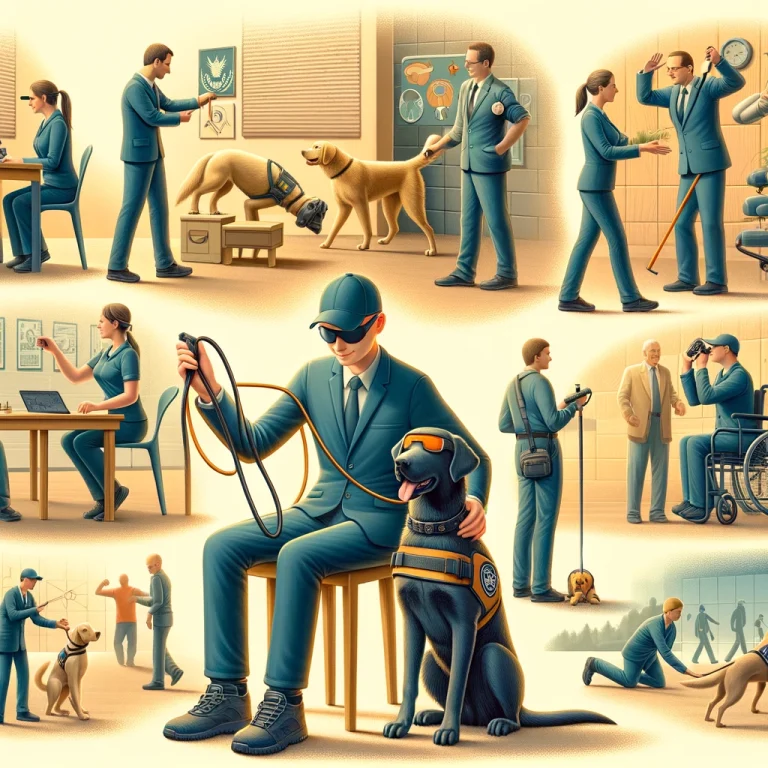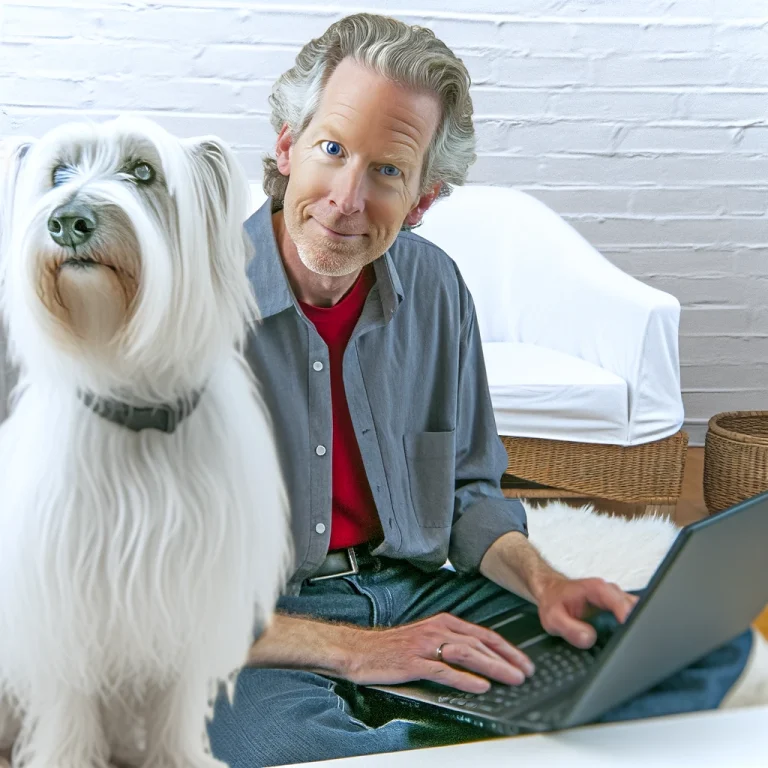Training your service dog goes beyond basic commands. Engaging in advanced training exercises not only builds essential skills but also strengthens the bond between you and your dog. In this blog post, we will explore advanced service dog training techniques, focusing on functional training exercises that make training both fun and effective. By the end of this guide, you’ll have a range of exercises to enhance your service dog’s abilities and keep them engaged.
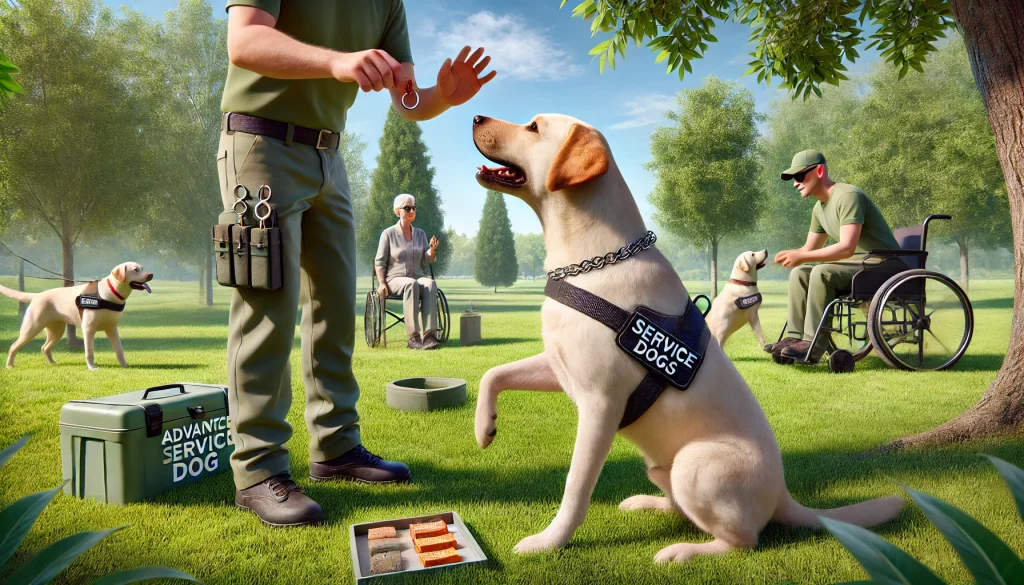
Understanding Advanced Service Dog Training
Why Advanced Training is Important
Advanced training for service dogs is crucial. It ensures they can perform complex tasks that are essential for assisting their handlers. Basic obedience is a foundation, but advanced training takes your service dog’s skills to the next level, enhancing their reliability and functionality in various situations.
Benefits of Advanced Training
Advanced service dog training offers numerous benefits. It helps in developing new skills, reinforcing existing ones, and keeping your dog mentally stimulated. Advanced training can also address specific needs, making your service dog more adaptable and capable of providing better assistance.
Functional Training Exercises
Retrieve Specific Items
Teaching your service dog to retrieve specific items is a highly functional skill. Start with simple objects like a water bottle or a set of keys. Use clear commands and positive reinforcement to guide your dog. Gradually introduce more complex items, ensuring your dog understands and responds accurately to each command.
Opening and Closing Doors
Training your service dog to open and close doors can be incredibly helpful, especially for individuals with mobility issues. Use a rope or a cloth tied to a door handle for practice. Start with the “pull” command for opening and “push” for closing. Reinforce each successful attempt with treats and praise.
Light Switch Operations
Teaching your service dog to operate light switches can enhance their usefulness at home. Begin by using a stick or a pointer to show the dog the switch. Use the command “lights” and guide their paw to the switch. Practice consistently, rewarding successful attempts to ensure your dog understands the task.
Alerting to Alarms and Sounds
Service dogs can be trained to alert their handlers to specific sounds like alarms, doorbells, or phone rings. Use recorded sounds to practice. When the sound plays, command your dog to “alert” and reward them when they notify you. This exercise improves your dog’s attentiveness and responsiveness to important auditory cues.
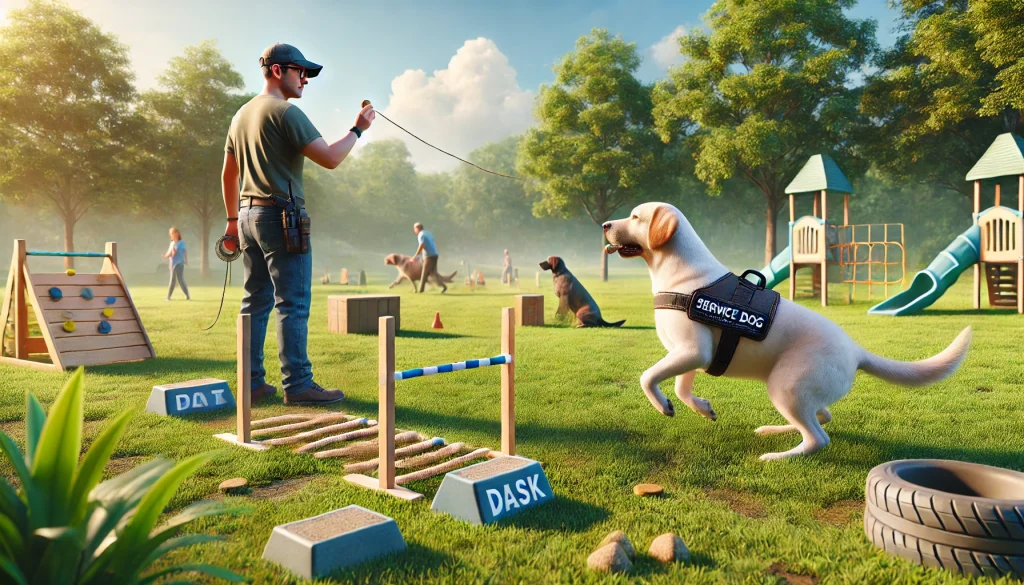
Service Dog Skill Building
Navigating Obstacles
Obstacle courses are excellent for building your service dog’s agility and problem-solving skills. Set up a simple course with cones, ramps, and tunnels. Use commands like “over,” “under,” and “around” to guide your dog through the course. This exercise improves their coordination and confidence in navigating different environments.
Scent Training
Scent training can be both fun and functional. Teach your service dog to identify and locate specific scents, such as medication or personal items. Start with a scent sample and use the “find it” command. Gradually increase the difficulty by hiding the scented item in different locations. Scent training enhances your dog’s olfactory abilities and their usefulness in various situations.
Advanced Obedience Commands
Beyond basic commands, teach your service dog advanced obedience commands like “back up,” “stand,” and “heel.” These commands improve your dog’s control and precision. Practice in different environments to ensure your dog responds reliably, regardless of distractions.
The Role of Positive Reinforcement
Using Rewards Effectively
Positive reinforcement is key to successful training. Use treats, praise, and play as rewards for successful attempts. Consistent rewards reinforce desired behaviors and motivate your dog to perform well. Tailor the rewards to your dog’s preferences to keep them engaged and enthusiastic.
Timing and Consistency
Timing is crucial in training. Reward your dog immediately after they perform the desired behavior to reinforce the connection between the command and the action. Consistency in commands and rewards helps your dog understand expectations and improves their learning process.
Importance of Pet Insurance and Service Dog Products
Ensuring Health and Well-being
Pet insurance is essential for maintaining your service dog’s health. It covers veterinary expenses, ensuring your dog receives regular check-ups, vaccinations, and emergency care. A healthy dog is more capable of effective training and service. Regular veterinary care can detect health issues early, preventing them from becoming severe.
Investing in Quality Products
Using high-quality service dog products, such as vests, harnesses, and leashes, enhances your dog’s ability to assist you. These products ensure comfort and visibility, making it easier for your service dog to perform their tasks. High-quality gear reduces the risk of injury and improves your dog’s performance.
Self-Training Options
Benefits of Self-Training
Self-training your service dog can be a rewarding experience. It allows you to tailor the training to your specific needs and build a stronger bond with your dog. Additionally, it can be more cost-effective than professional training. Self-training also provides flexibility, allowing you to train at your own pace and schedule.
Resources for Self-Training
Websites like ServiceDogOwners.com offer resources and guides for self-training your service dog. These resources provide step-by-step instructions, training tips, and support from experienced trainers, making the process more manageable. Access to a supportive community and expert advice can enhance your training success.
Conclusion
Advanced training exercises for your service dog are both fun and functional. They build essential skills, enhance your dog’s abilities, and strengthen the bond between you and your dog. By incorporating advanced service dog training, functional training exercises, and service dog skill building into your routine, you ensure your service dog remains engaged and effective in assisting you.
Investing in pet insurance and quality service dog products further supports their health and ability to assist you. Whether through professional training or self-training, these dogs become invaluable partners in managing disabilities and improving quality of life.
Start your advanced training journey today and experience the benefits of a well-trained service dog by your side. With dedication and consistency, you can unlock your service dog’s full potential and enjoy a more independent and fulfilling life.
Searching for a way to boost your income while keeping your service dog by your side? Learn how to launch a Side Hustle or new career and increase your earnings alongside your loyal companion. Click Here to find out more and start your journey today!
